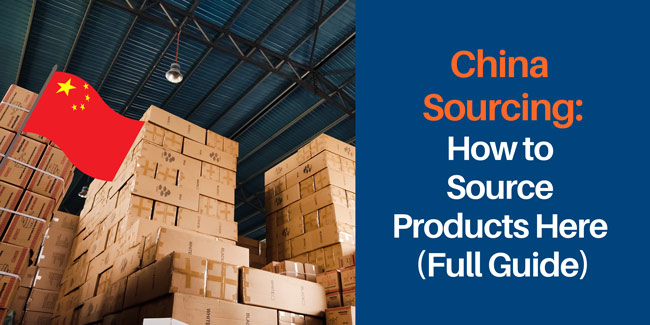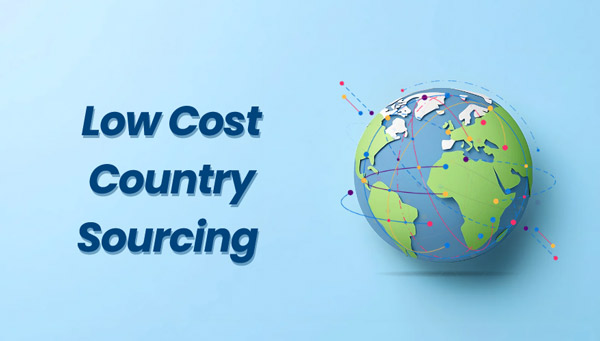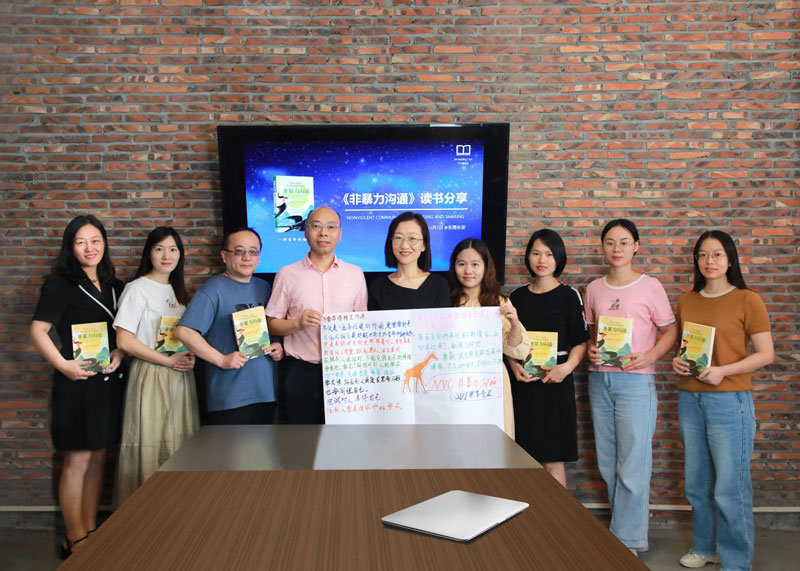How to Source Products from China (Full Guide)
- Date:
- Author: SVI Content Team
- Share:

Even with more companies looking to diversify, China sourcing is still a key part of global manufacturing. It’s not just about lower costs. Over decades, China has developed a mature manufacturing ecosystem, complete with specialized industrial clusters, skilled labor forces, and excellent infrastructure. This setup helps businesses move faster from idea to production, all within one region.
In this guide, you’ll learn how to start sourcing products from China step by step. We detail the common challenges at each stage and provide actionable strategies to avoid them. This should help you decide whether you buy directly by yourself or work with a China sourcing agent. Assess your needs against our list below.
Part 1. Why You Need to Import from China
Here are the pros and cons of China product sourcing:
⭕ Pros:
- Access to diverse, competitive suppliers across every product category
- Specialized industrial zones (like Shenzhen for electronics or Yiwu for small commodities) provide complete ecosystems
- Well-developed infrastructure in railways, highways, ports and air routes ensures the rapid product collection and distribution
- Large-scale production and strong flexibility to meet market demands
- Lower production costs for bulk orders to gain a competitive edge
- Advanced manufacturing technology and automation for production
- Quick scalability for growing brands
❌ Cons:
- Quality inconsistencies without proper control
- Language and time zone barriers
- Longer delivery time by ocean freight to distant countries
- Complex logistics and customs documentation
- Risk of Intellectual Property (IP) leakage or unreliable suppliers
- Tariffs and trade barriers between China and the U.S.
Need Help Sourcing from China?
Let SVI Global find the right suppliers and manage your project.
We guarantee quality and on-time delivery!
Part 2. Step-by-Step: How to Source Products from China Directly
Sourcing means identifying, evaluating, and managing Chinese suppliers to produce and deliver goods that meet a company’s quality, cost, and compliance goals. It’s not only about finding a factory, but also about managing conversations, risk, and quality across the entire process.
Step 1. Define Your Product Requirements
🎯 Goal: Clarify requirements to prevent misunderstandings.
❓ Challenges: Without a detailed Tech Pack, factories may interpret your ideas differently and produce based on their “common practice,” often missing your critical details.
✅ What to do:
- Develop a comprehensive Product Specification Sheet. This must list materials, dimensions, colors, functions, target price, required certifications, packaging details, and quality standards.
- Provide visual references or product photos to minimize miscommunication.
Step 2. Research and Shortlist Suppliers
🎯 Goal: Identify 2-3 qualified supplier candidates that match your needs.
❓ Challenges: Forged business licenses & reviews, inflated certifications, and trading companies posing as factories.
✅ What to do:
- Search through trusted platforms (Alibaba, Global Sources, 1688) and verify company profiles.
- Check registration details, business licenses, and years in operation.
- Request on-site photos or videos of the production floor, QC area, and warehouse.
Step 3. Request for Quotation (RFQ)
🎯 Goal: Get accurate quotes from suppliers and compare pricing to assess cost-effectiveness.
❓ Challenges: Different quotation structures (FOB, EXW, etc.), not including mold fees, etc., low “fishing price” at the beginning
✅ What to do:
- Send a detailed and uniform file that includes specifications, expected trade terms and volumes to all potential suppliers.
- Ask suppliers to list mold fees, packaging fees, material fees, or any other potential surcharges.
- Clarify quotation details, stating: the validity period of the price, payment methods, minimum order quantities, delivery date, and final total cost.
Step 4. Conduct a Factory Audit
🎯 Goal: Verify the chosen suppliers’ actual capabilities.
❓ Challenges: Poor quality systems, weak production management, or non-compliance with labor standards.
✅ What to do:
- Perform a factory audit via a third-party.
- Review production capacity, quality control procedures, equipment, and certifications.
- Identify gaps and require improvement in final negotiations.
Step 5. Request Samples and Validate Quality
🎯 Goal: Confirm that the supplier can meet product requirements and find the final candidates.
❓ Challenge: Sample quality not equal to mass production quality, design or idea leakage
✅ What to do:
- Pay for samples to ensure they are from the production line.
- Run lab or third-party tests to confirm function, materials and safety.
- Sign an NDA (Non-Disclosure Agreement) before sharing detailed drawings.
- Keep a sample approval form to serve as the reference for mass production.
Step 6. Negotiate Pricing and Terms
🎯 Goal: Finalize cooperation terms based on verified audit results and risk assessment.
❓ Challenges: Payment risk, hidden costs, vague contract clauses, or IP ownership disputes.
✅ What to do:
- Use the audit report as leverage to negotiate pricing and improvements.
- Avoid 100% upfront payments; use 30/70 payment terms or other secured methods
- Sign a comprehensive contract covering:
- Product specs and quantity
- Pricing and payment terms
- Delivery schedule and penalties for delays
- Quality acceptance criteria (Acceptable Quality Limit – AQL)
- IP rights and non-disclosure
- Dispute resolution clauses
Step 7. Mass Production and Quality Control
🎯 Goal: Ensure that bulk production follows approved samples and maintains consistent quality.
❓ Challenges: Using cheaper materials without notice, production delays, inconsistent workmanship.
✅ What to do:
- In-line inspection: On-site inspection when 20 to 30% of production is complete. Check the quality of raw materials, semi-finished products to catch defects early.
- Final inspection: When 80% is packed, conduct standard AQL sampling inspections before the goods leave the port.
- Require detailed QC reports with photos before shipment.
- Don’t rely solely on the supplier’s QC; hire a third-party inspection team.
Step 8. Arrange Shipping & Customs
🎯 Goal: Ship goods safely, manage payment, and avoid unexpected costs.
❓ Challenges: Logistics delays, incomplete documents, or unexpected surcharges.
✅ What to do:
- Choose suitable Incoterms (FOB, CIF, or DDP) based on your experience and risk control preference.
- Work with a reliable freight forwarder rather than leaving shipping fully to the factory.
- Prepare accurate documentation (Commercial Invoice, Packing List, CO, B/L).
- Understand hidden costs: inland freight, port charges, customs duties, VAT.
- Maintain control of payment release after goods pass final inspection.
Step 9. Maintain Communication & Build Partnerships
🎯 Goal: Turn a one-time supplier into a long-term strategic partner.
❓ Challenges: Time zone differences, Chinese holidays, lack of proactive updates, or miscommunication due to “face culture.”
✅ What to do:
- Create a production calendar noting production stages, your delivery date and China’s holidays (e.g., Chinese New Year, Golden Week).
- Set up a structured weekly progress and risk report system, requiring suppliers to flag any potential issues within 48 hours of discovery.
- Offer constructive feedback and recognize good performance.
Part 3. Other Common Mistakes Overlooked When Sourcing Supplier in China
1. Choosing suppliers only focuses on low price.
2. Skipping pre-production samples.
3. Unfamiliar with or ignoring regulations and customs requirements at the targeted market.
4. Forgetting inland freight, export fees, customs duties, or quality inspection costs.
5. No backup supplier, relying on a single factory without a contingency plan for production delays or defaults.
6. Lack of bilingual staff leads to production errors.
7. No local expertise to manage production and international transportation.
Part 4. Should You Source Directly or Use a China Sourcing Agent?
Whether you choose direct sourcing from China or leverage a sourcing agent, it depends on your goals, sourcing strategies, resources, and risk tolerance.
When to Source Directly from China:
- You already have sourcing experience or dedicated teams to manage suppliers.
- You can handle supplier communication, negotiation, and quality control yourself.
- Your orders are large and stable to meet the factory’s minimum order quantity (MOQ).
- You or your local team can visit factories in China for on-site audits or issue resolution.
- You are familiar with Chinese manufacturing, contract terms, and business culture.
Benefits of direct sourcing:
- Full Control: Direct communication and decision-making with factories.
- Cost Savings: No agent commissions or service fees.
- Closer Relationships: Easier to establish long-term partnerships and better pricing.
- Faster Response (if local team available): Issues can be resolved quickly with direct access to production staff.
When to Use a China Sourcing Agent:
- You are new to importing or sourcing from Asia.
- You lack time in verifying suppliers and negotiating contracts.
- You don’t have a local team in China or Asia to monitor production and conduct inspections.
- You need multi-country supply chain diversification (China, Vietnam, Thailand, etc.).
- You want to minimize risk and ensure quality and compliance through experts.
Benefits of China sourcing services:
- Verified Supplier Network: Agents maintain vetted factories that meet quality, compliance, and certification requirements.
- Time & Cost Efficiency: Saves time on supplier vetting, audits, and follow-up. Focus on your core business.
- Quality Assurance: Local teams monitor production and conduct inspections to prevent quality failures.
- Better Negotiation Power: Agents can leverage existing factory relationships to secure better pricing and payment terms.
- Cultural & Language Bridge: Agents help overcome communication barriers and avoid misunderstandings.
- Risk Reduction: Reduces chances of fraud, late delivery, or non-compliance with import standards.
How SVI Global Helps You Source from China
For over 20 years, SVl Global has helped U.S. brands and importers reduce supply chain risk and improve costs with reliable, vetted production partners across Asia and Mexico.
✔ 500+ experts in 9 countries for a diversified supply chain
✔ Powered by 1,000+ vetted factories
✔ 15000+ shipments per year
✔ End-to-end sourcing solutions from supplier vetting to shipments
✔ Quality control & engineering support
✔ In-house CPSC-certified lab testing
Conclusion
China remains an unparalleled sourcing destination. Sourcing from China is a powerful strategy for businesses seeking a competitive advantage and building a reliable, efficient, and high-quality supply chain.
Whether you import directly or work through a service agent, focusing on the right process can make the difference between risk and reward.
Evaluate your position against the framework in this guide, and remember: due diligence and quality control are your non-negotiable foundation for starting an order and nurturing trust.






